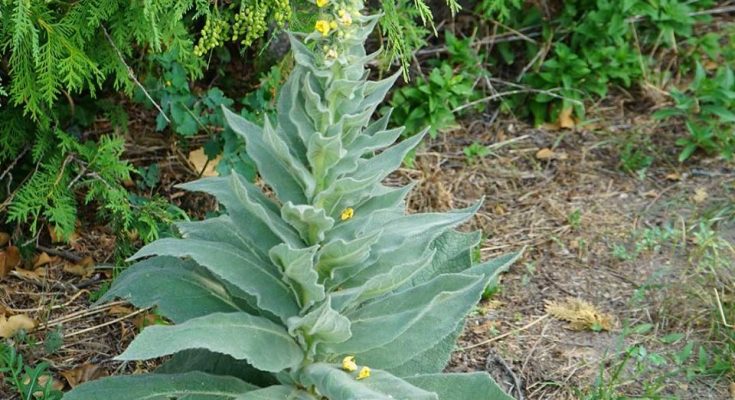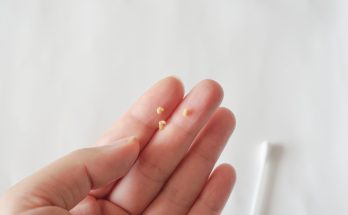|
The mullein plant, often overlooked by many, is a botanical treasure trove of benefits. Known scientifically as Verbascum thapsus, this tall, fuzzy-leaved plant is a common sight along roadsides and in open fields. Despite its unassuming appearance, mullein has been used for centuries in traditional medicine for its wide array of health benefits. Its towering stalks and vibrant yellow flowers make it a striking plant, yet many pass by without realizing its potential. Mullein is not just a weed; it’s a powerhouse of natural remedies waiting to be discovered.
Historical Significance and Folklore
Mullein has a rich history steeped in folklore and traditional use. In ancient times, it was believed to ward off evil spirits and was often used in rituals and ceremonies. The Greeks and Romans used mullein for its medicinal properties, particularly for respiratory ailments. In the Middle Ages, it was known as ‘Hag’s Taper’ and was used as a wick for candles. Native Americans also recognized its healing properties, using it to treat coughs, colds, and skin conditions. The plant’s historical significance is a testament to its enduring value in herbal medicine.
Identifying the Mullein Plant
Identifying mullein is relatively easy due to its distinctive features. The plant typically grows between 2 to 6 feet tall, with a single, unbranched stalk. Its large, velvety leaves are arranged in a rosette at the base, and the stalk is topped with a dense spike of small, yellow flowers. The leaves are soft and fuzzy to the touch, a characteristic that helps the plant conserve moisture. Mullein’s unique appearance makes it easy to spot once you know what to look for.
Habitat and Growth Conditions
Mullein thrives in a variety of environments, making it a versatile plant. It prefers well-drained, sandy soils and is often found in disturbed areas such as roadsides, fields, and open meadows. Mullein is a biennial plant, meaning it completes its life cycle in two years. In the first year, it forms a rosette of leaves, and in the second year, it sends up a flowering stalk. The plant is hardy and drought-resistant, able to grow in poor soil conditions where other plants might struggle.
Top 10 Benefits of the Mullein Plant
Mullein offers a multitude of health benefits, making it a valuable addition to any natural medicine cabinet. Here are the top 10 benefits of this remarkable plant.
1. Respiratory Health Support
Mullein is renowned for its ability to support respiratory health. It acts as an expectorant, helping to clear mucus from the lungs and airways. This makes it particularly effective for treating coughs, colds, and bronchitis. Mullein tea or tincture can soothe irritated respiratory tissues and promote easier breathing.
2. Anti-Inflammatory Properties
The anti-inflammatory properties of mullein make it useful for reducing inflammation throughout the body. It can help alleviate symptoms of conditions such as arthritis and joint pain. The plant contains compounds that inhibit the production of inflammatory markers, providing natural relief from discomfort.
3. Antimicrobial Effects
Mullein possesses antimicrobial properties that can help fight off infections. It has been shown to be effective against a range of bacteria and viruses, making it a useful ally during cold and flu season. Mullein extracts can be used to support the body’s natural defenses against pathogens.
4. Pain Relief and Analgesic Qualities
Mullein has mild analgesic properties, which can help relieve pain. It can be used topically or internally to ease discomfort from headaches, muscle aches, and other minor pains. The plant’s soothing effects make it a gentle option for pain management.
5. Skin Health and Healing
Mullein is beneficial for skin health, promoting healing and reducing irritation. It can be used to treat minor wounds, burns, and rashes. The plant’s anti-inflammatory and antimicrobial properties help speed up the healing process and prevent infection.
6. Digestive Aid
Mullein can aid digestion by soothing the digestive tract and reducing inflammation. It may help alleviate symptoms of indigestion, bloating, and stomach cramps. Drinking mullein tea can promote a healthy digestive system and improve overall gut health.
7. Immune System Boost
The immune-boosting properties of mullein make it a valuable addition to any wellness routine. It supports the body’s natural defenses, helping to ward off illness and maintain overall health. Regular use of mullein can enhance immune function and resilience.
8. Antioxidant Richness
Mullein is rich in antioxidants, which help protect the body from oxidative stress and free radical damage. These compounds support overall health and may reduce the risk of chronic diseases. Incorporating mullein into your diet can contribute to long-term wellness.
9. Stress and Anxiety Reduction
Mullein has calming effects that can help reduce stress and anxiety. It promotes relaxation and can be used as a natural remedy for tension and nervousness. Drinking mullein tea or using it in aromatherapy can create a sense of calm and well-being.
10. Earache Remedy
Mullein oil is a traditional remedy for earaches and ear infections. The oil can be gently warmed and applied to the ear to relieve pain and reduce inflammation. Its antimicrobial properties also help combat infection, making it a safe and effective treatment for ear discomfort.
How to Harvest and Prepare Mullein
Harvesting mullein is simple and can be done throughout the growing season. The leaves and flowers are the most commonly used parts of the plant. Leaves can be harvested in the first year, while flowers are best collected in the second year when the plant is in bloom. To prepare mullein, the leaves and flowers can be dried and used to make teas, tinctures, or infused oils. It’s important to ensure the plant is free from pesticides and pollutants before harvesting.
Precautions and Potential Side Effects
While mullein is generally considered safe, it’s important to use it with caution. Some individuals may experience skin irritation or allergic reactions. It’s advisable to perform a patch test before using mullein topically. Pregnant and breastfeeding women should consult a healthcare professional before using mullein. As with any herbal remedy, it’s important to use mullein in moderation and consult with a healthcare provider if you have any underlying health conditions.
Conclusion: The Hidden Treasure of Mullein
Mullein is a remarkable plant with a wealth of benefits that often go unnoticed. Its historical significance, diverse health applications, and ease of identification make it a valuable resource for natural healing. Whether you’re seeking relief from respiratory issues, inflammation, or simply looking to boost your overall wellness, mullein offers a natural and effective solution. By taking the time to learn about and utilize this hidden treasure, you can tap into the rich legacy of herbal medicine and enhance your health naturally.
|
Stumble upon this plant and you’ve struck gold. Most folks walk right past it without a clue



